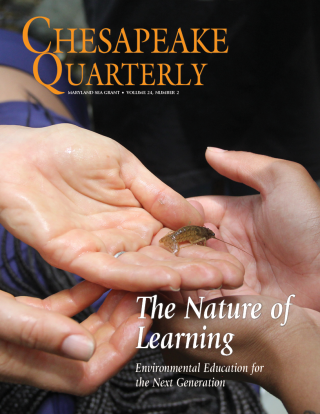Knauss legislative fellowships in Congress help build careers — and they're fun and educational. See our video and fact sheet for details.
The Maryland Sea Grant Bookstore will be closed for the winter holidays from Monday, December 15th to Friday, January 2nd and will not be taking orders during that time.
Interactive Instructional Strategies
Maryland Sea Grant offers a variety of useful and engaging online interactive instructional strategies about marine and coastal science and its application in the Chesapeake Bay region.
Aquaculture Education
Educators across the nation are discovering that aquaculture offers an effective tool for teaching science and an excellent vehicle for project-based learning. Maryland Sea Grant and University of Maryland Extension have developed an educational program called Aquaculture in Action for K–12 science teachers. It is built upon five fundamental elements: providing teacher professional development, connecting to current research, developing school system partnerships, collecting school projects and data, and developing innovative technologies.
Biofilms and Biodiversity
One way to measure biodiversity is to examine aquatic biofilm and biofouling communities. Biofilms are bacterial colonies that form in layers. They can be found in many areas of the human body and in the environment. With this interactive lesson, you will evaluate biofilm and biofouling communities grown on discs suspended vertically in the Baltimore Inner Harbor water. The discs are periodically checked during the year and observed for colonization and species diversity. Guidance is also provided for developing your own project and analyzing data.
Eastern Oyster Education
The Eastern oyster, Crassostrea virginica, is an iconic species in the Chesapeake Bay and an integral part of the history of the Bay and of Maryland. You can learn more about this fascinating mollusk through these interactive lessons.
Spotted Salamander Symbiosis
Students will examine spotted or yellow-spotted salamanders lifecycle and its one-of-a-kind symbiotic relationship with the algae, Oophila ambylstomatis. Spotted Salamander Symbiosis was created to provide an instructional strategy for the classroom that will enhance symbiosis content, reinforce classic biological concepts, and provide examples of project-based learning that merge the field and classroom.





